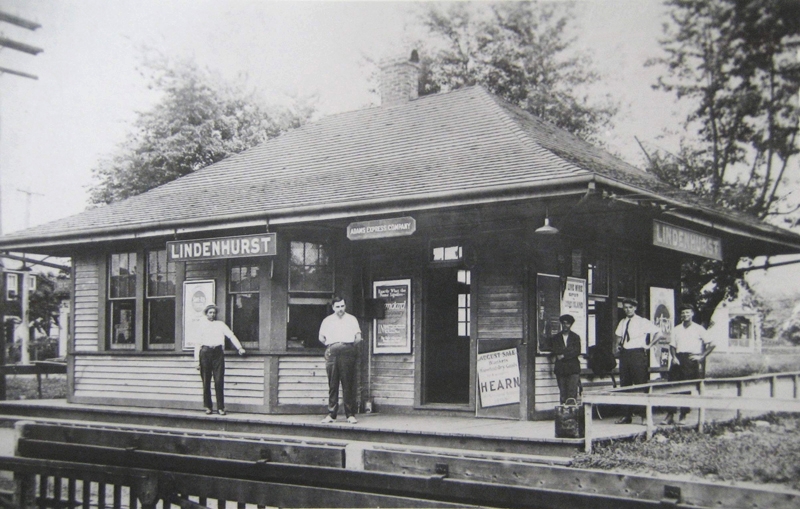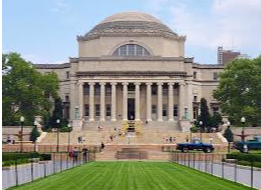The Evolution of Lindenhurst
The tale of the forgotten village Lindenhurst used to be
June 5, 2018
It is rare to walk around Lindenhurst, New York and fully comprehend that at one point there was absolutely nothing built on the earth beneath our feet. There were no streets paved, no buildings constructed, and no people. The land inhabited by the Secatogue tribe and other Native American tribes was once known as Neguntatogue, which translated to our tongue “the forsaken land. When the land was purchased by an English farmer by the name of Jonas Wood in 1657, it was not his intention to one day have this empty barren land turn into one of the first major industrial villages of Long Island which still inhabits over 20,000 people today. The industrial era and the major need for more railroad tracks would transform these fields into the homes we see today.
The south side railroad, would extend from Jamaica, Queens all the way to the town of Babylon on Long Island. This line would later on become known as the Babylon Train Line and is today one of the busiest train lines in the entire country. As these tracks were laid down through town after town of open country, a secluded group of people would not be ready for the population boom that would come as a result of the south side railroad. One of the major towns that built itself from the past to the modern era would be what is now known as Lindenhurst.
In this country of unimagined opportunity, two businessmen would decide to construct their own idea of how the American people should live. A woman by the name of Abby Welwood first saw the true worth and beauty of the land. Abby and her husband of Irish origin, Thomas Welwood, would use their past successes in the real estate business to create something out of a forsaken land. Thomas Welwood would soon meet his business partner, Charles Schleier, and embark on a mission to inhabit long Island. These two men realized that they had the best marketing tool to sell their land to many of prospective buyers: the Long Island railroad. This train would be used by these two men to bring people out from the city to see the beauty that Abby Welwood envisioned. These two men also had another idea up their sleeves that would have people flood into Long Island from the city. Charles Schleir was a German born immigrant to the United States. He was born in the German town of Breslau, now known as Wroclaw, Poland. Schlier had learned from his home city that there was a way of life that many German Americans had missed here in the United States. He knew that the German Immigrants crowded into the Brooklyn slums were more interested in moving to cities similar to that of their home country. Charles Schleier and Thomas Welwood made it their goal to create the American version of Breslau. A city where men and woman could live and work in. A place that had everything you needed in close distance in order to survive and become more and more self sustainable. These gentleman were ready to sell this land cheaply and quickly.
The land was being sold in plots that were 25 x 100 feet. These plots of land were being sold inexpensively because Welwood and Schleier knew in the long run they would reap the benefits. As the land began to sell, people were coming out to the newly formed Wellwood Station where they would lay eyes on their future. The people who moved out here were predominantly of German descent and saw this village as some place where they could make a living and build many new lives in a place that wasn’t reserved for the poorest of immigrants. By 1873, the booming population and appearance of factories and industry would help officially establish a village with a name none other than its model city, Breslau.
Breslau was a city that was in Germany at the time of the late 19th century. It was built with the intentions to employ, house and educate thousands of people. This city was created so people wouldn’t have to travel far for anything. Schleier being from Breslau knew that this was the best way to form a city. Give the people what they need. It wasn’t long before this vision began to come to fruition. With the abundance of factories being created and the building of public schools, Breslau became one of the fastest growing towns on Long Island and one of the only town that was ready for the economic boom that would claim the first two decades of the 20th century. Unlike the many settlements that formed around rivers and water. Lindenhurst formed around the Wellwood train station (Incorrectly named after Thomas Welwood). By the 1880’s, Schleier and Welwood had fallen out and were no longer partners in business. A recession slowed down land buying, and after unorganized business practices made people skeptical to purchase land here. Welwood and Schlier brought the people here, but it was now up to the residents of Breslau to control where they lived. This in turn led to the renaming of the town in 1891 to Lindenhurst. Named for all the linden trees here, Lindenhurst was established to attract more buyers who were skeptical of the business practices done in Breslau. It is safe to say the plan worked.
In the beginning of the 20th century the village of Lindenhurst began to grow steadily due to the easy access to the city and the employment opportunities in the fishing industry and in the factories and shops in the village.
When the Great War came around and the United States asked for their men to perform their duties, the town sent over a number of young men of which only two did not return. A monument still stands on the intersection of Wellwood Avenue and Hoffman Avenue to honor the men who risked their lives overseas. The Great War had more of impact in many American towns then most people have come to realize. Many of the people living lindenhurst had never even left the state of New York especially those who were young enough to serve in the war. These men were sent to Europe to fight and while they were there they saw art, culture and a completely different way of life that many soldiers wished for back home. When the war ended in 1919, the soldiers coming home didn’t want to go back to the same way of living after seeing the world. Victor Pisani and Isis Meister saw their chance to fulfill the culture seeking needs of the people. They would begin to construct what would become known as The American Venice. These two men would try and recreate the canal like streets of leisure and relaxing atmosphere that are found in Venice, Italy. These men chose to build this on the Border of Copiague and Lindenhurst. After creating a series of canals and waterways their plan seemed to be taking off. But unfortunately when 1929 came and the economy had one of the worst depressions to date, funding ran out and the idea of recreating the beauty of Venice soon disappeared and the only thing that reminds us of their vision are the two winged lions standing proud on top of their marble columns as well as the streets and waterways that are so irregularly shaped. It’s only from a birds eye view that one can see the true human impact on the land.
After a miserable decade following the crash of 1929, The self sustainability of LIndenhurst saved the fate of the local economy and its people far better than most towns and cities in the country at the time. But after the 1930’s no one was prepared for the next chapter of world history that would affect every little town in the country as well as many countries abroad: The Second World War. Lindenhurst saw its list of fatalities after the four years of American service in the war and would now be hit with a housing boom that was seen all over the country. The open land used for farming and for leisure were now gone. People needed a place to live and the land proved cheap. Following the creation of what is known as the G.I. Bill, the need for housing for all of the veterans became the priority and from that point on Lindenhurst would become the densely populated village it is today. When the second half of the last century was beginning, so was a different chapter for Lindenhurst. No longer was it a “German town,” nor did it belong to one particular person. The United States had just accomplished something that had never been seen before. Men of all races and creeds fought side by side under one flag not for the safety of their country but for the safety of mankind, and this was felt in all villages around the country. We were no longer German or Italian, we were Americans now with the same goals. Americans who aspired to live the best lives offered to us and to raise our families in communities where we feel safe and connected. Lindenhurst had grown from empty land to a thriving village that even today still houses some of the most well known businesses and establishments in less than two centuries.












Joy Carotenuto • Jun 6, 2018 at 7:37 pm
A very well written history !
I moved to Lindenhurst when I was 5years old .
The town was lovely with stores that thrived .
Thank you for sharing the history of Lindenhurst
So interesting !